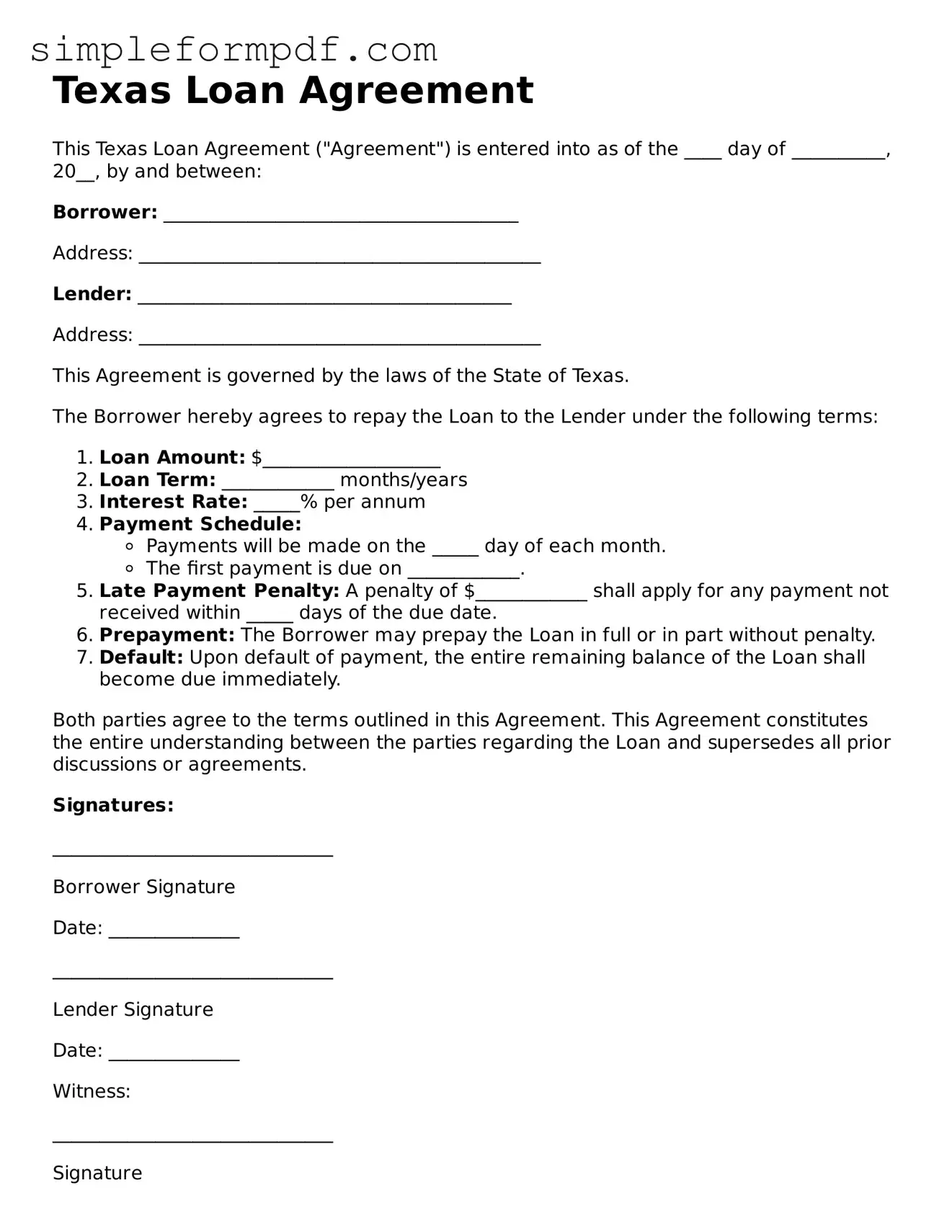Texas Loan Agreement
This Texas Loan Agreement ("Agreement") is entered into as of the ____ day of __________, 20__, by and between:
Borrower: ______________________________________
Address: ___________________________________________
Lender: ________________________________________
Address: ___________________________________________
This Agreement is governed by the laws of the State of Texas.
The Borrower hereby agrees to repay the Loan to the Lender under the following terms:
- Loan Amount: $___________________
- Loan Term: ____________ months/years
- Interest Rate: _____% per annum
- Payment Schedule:
- Payments will be made on the _____ day of each month.
- The first payment is due on ____________.
- Late Payment Penalty: A penalty of $____________ shall apply for any payment not received within _____ days of the due date.
- Prepayment: The Borrower may prepay the Loan in full or in part without penalty.
- Default: Upon default of payment, the entire remaining balance of the Loan shall become due immediately.
Both parties agree to the terms outlined in this Agreement. This Agreement constitutes the entire understanding between the parties regarding the Loan and supersedes all prior discussions or agreements.
Signatures:
______________________________
Borrower Signature
Date: ______________
______________________________
Lender Signature
Date: ______________
Witness:
______________________________
Signature
Date: ______________
